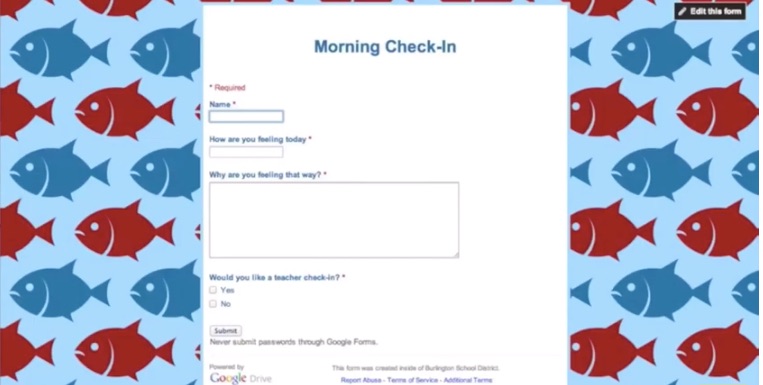The need for trauma-informed practice is particularly salient during the current global pandemic, when many if not all of us are experiencing trauma daily. And educators are working hard to translate trauma-informed practice to emergency remote learning.
Luckily, we have experts like Alex Shevrin Venet engaged in the current moment. She’s a local Vermont educator with global reach, writing on trauma-informed education at her blog, on twitter, and for publications like edutopia.
In concert with Tim O’Leary, co-director of What’s the Story, we organized a “Lunch n’ Learn webinar” for Alex to take a global audience a little farther in unpacking trauma-informed distance learning. We asked attendees to read a couple of Alex’s recent articles, then tune in for an hour and send Alex their questions. The 500 seats at in our Zoom room filled up in a matter of hours. The questions? Were amazing.
Tim produced a video of the conversation with Alex, and a full transcript is available below. Spend some time listening to Alex and her recommendations for how we as educators can be responsive in supporting students with trauma-informed distance learning.
Alex: Hi, everybody. Hi, everyone. Welcome, welcome everyone. I’m Alex. I’ll introduce myself more in just a moment. Welcome to all. I want to draw your attention on the slide in front of you that we have a link to a resource page. If you were tweeting, this launch and learn, feel free to use the #vted hashtag. That’s our Vermont education hashtag and we love to see your thoughts on there.
A couple of quick introductions, I’m Alex Venet, coming at you from Winooski, Vermont. I’m a professional development facilitator and educator. I teach community college. And I teach in-service teachers through graduate courses, and I write and I do a bunch of other stuff. My focus is on trauma informed education and social emotional learning and equity.
Life, do you want to introduce yourself?
Life: Sure, thanks, my name is Life LeGeros. I’m in the foothills of the Green Mountains here in Vermont, in South Duxbury. I use he/him pronouns and I’m just so excited to be here. Thank you, Alex for inviting me. I know how much your work is respected across Vermont, with partner educators who I work with as well as across the country and the globe. I always learn a lot from you, so I appreciate it.
Alex: So, Life and I are going to be basically just having a conversation about our current state of emergency distance learning, and trauma, and how we navigate all of this.
A couple of logistical things:
- I’m going to do a couple of really quick getting ready to learn things activities for us to get in this space together.
- Then I’ll have just really quick opening thoughts just to situate us.
- And then we’ll really dig into some questions and answers, including questions that you all have asked ahead of time as well as questions that folks in the webinar, put into our Q&A, which I’ll talk about again in a second;
- then we’ll wrap up.
With that we’re going to do a couple of really quick getting-ready-to-learn pieces that I like to do whenever we start our learning experience.
First, I like to take a moment and just get grounded. Check in with yourself.
In a moment what I’m going to do is turn off my camera for 30 seconds and just take a second to get settled. And I encourage you to take that moment for yourselves as well.
Some things that you might do:
- you might drop your shoulders;
- or see if your jaw has clenched throughout your day;
- you might want to notice your breathing and just kind of check in with how that’s going;
- you might want to stretch, or move your body a little bit.
If it doesn’t feel right to check in with your body right now, maybe just look at your surroundings. Ground yourself in where you are, what’s around you or what’s in your environment.
And if you’re in need of a little bit of an energy, you can do just this really simple exercise: rub your palms together to create a little energy and heat, then press one hand over your heart. Just feel that energy that you have.
Or you can just sit there and stare or check Twitter — or do whatever — for 30 seconds. It’s really up to you. But I’m going to take that moment for myself and I will see you back here in 30 seconds.
**thirty seconds pass**
And I’m back. I hope that was a good grounding moment for you.
The other piece that I like to do as we come into any learning experience is to check in with those around us and see what folks are bringing to the learning space.
So, the activity I like to do is called Rose and Thorn. Really simple, you just say a Rose, which is something going well for you today, and a Thorn, which is something not going so well.
If you are watching the livestream, feel free to drop your rose and thorn on Twitter, using that VTed hashtag or turn to someone in your space and share a rose and thorn or just think about what that is for you today. Life, what’s your rose and thorn today?
Life: My rose? This morning I woke up to a coating of fresh snow. It was really refreshing and nice. And it’s kind of interesting because yesterday that same thing happened and was more of a thorn for me. So to me that shows we’re very quick to adapt, and also things hit you differently in different moments.
For my thorn… I think you know this is an amazing opportunity. We have people all over the globe who are joining us. That’s super cool, but now that we’re actually here and chatting, I wish we were together. You know, I wish we were hanging out. I could talk to you about this stuff forever, maybe in a big room with all these folks too. But we’ll make the best of it.
Alex: My thorn is that snow from this morning. Partially because here in my town it didn’t stick, so we didn’t even get the benefit of it looking nice outside or anything. And my rose would be just this opportunity. I guess my rose and thorn are exact opposite of you; my rose is the opportunity to talk to folks this morning.
So actually we ended up with a weirdly great example of how the same exact events can just hit really different for people. I’m seeing in the chat that a lot of people also have roses and thorns connected to the weather. Thorns connected to the stress and isolation that we’re all feeling. Roses include some of the connections people are having.
Life: I see a lot of roses around hiking and getting outdoors more these days. things like that. Which is really important.
Alex: I like the rose and thorn activity in part because it allows us to just be mindful of what other folks are bringing to a learning experience, or to a collaboration experience. I highly encourage folks to use the activity when you go out to other meetings and gatherings.
All right. So: a couple of reminders here before we get started, around taking what you need.
The first is that anytime that we talk about trauma, mental health, or stress, it can be difficult or stressful for people to engage with that topic. So feel free to give yourself permission to take breaks. To step away from this if you need to. Just take care of your needs.
I am definitely not here to tell you what to do. You are the person who knows you and your students; you know your situation best. I’m here to offer some thoughts and take what you need out of them. And I also just want to clarify that we’ll be talking about trauma, and maybe some things that might be traumatic. But I won’t be sharing any specific stories or details or images of traumatic things.
And finally, I want to remind folks that this is the public space. So if you’re asking questions or using the chat, just encouraging folks not to be sharing any personal information or stories about students that are not yours to share.
https://twitter.com/innovativeEd/status/1250820622231486467
So with that, I’m just going to talk for a quick moment about some overall thoughts around trauma in our current situation.
I hope many of you have had the chance to look at the resources that we provided. And really, you know, my thoughts are going in many places these days, but I keep coming back to this idea that: we can be mindful that trauma looks different for everyone. But as a globe right now, we’re kind of living through a large community trauma. And that’s going to impact everybody differently.
So as educators, we really want to think about how to center care in everything that we’re doing. We want to be responsive to the hardship that a lot of people are going through.
I have these things I call Four Priorities and those are really my guideposts for how I think about my trauma-informed practice. Those are:
- Predictability
- Flexibility
- Connection
- Empowerment
I really come back to those a lot of times when I’m thinking about how to structure an activity, or how to do outreach or change policies or anything like that. So I may be referring back to those as we chat.
Now let’s just dive into some of these questions we have.
Life: Fantastic, thank you Alex. I so enjoy the readings. And I appreciate the opportunity today to dig a little deeper or to expand a bit. The first question we’re going to start with: Alex, a lot of your writing — not all of it, but much of it — is directed towards supporting students who have experienced trauma.
How can districts and schools support educators who might be experiencing their own trauma during this time?
Alex: This is such an important question and sometimes this is the last consideration that we get to when we talk about student trauma. When in fact, it really should be the first. If we as caregivers are not well, it is really hard and sometimes impossible to really provide care for others.
So one thing I want to say to every person out there, whether you’re a teacher or a parent or really any role of humanity ever, is that, it is okay to not be okay right now. Ae all need to drop the expectation that there is an okay right now.
We’re living through a global pandemic. And regardless whether on any given day you feel safe, or settled, or not safe or anxious. We’re still in this big context where the planet is not okay right now. I keep seeing this phrase “The new normal.” And I may have even used that one myself, but there isn’t really a new normal. Because this isn’t normal. So I think the starting point really is validating that all of that is all right and starting there.
Beyond that, you know, I kind of think about two layers, right?
So, one is directly speaking to teachers. Reminding folks that it is important to take care of ourselves so we can take care of the kids. But that doesn’t mean you have to somehow elbow through on your own, you know? Healing and resilience comes through our community and our relationships with others.
I encourage folks to think: who are your support people? How might you be vulnerable and lean on them?
I highly, highly, highly encourage everyone to check in with your therapist, if you have one. And if you don’t have one, therapists are moving things online. There are apps like Talkspace, where you can access somebody, virtually.
If you have a faith leader you connect to. If you have a supportive group of folks you can talk to. Or if you have a partner or a family member or friend. Really reach out. It’s okay to ask for help.
I encourage folks to use those supports and to take it slow, right? We’re in a marathon, not a sprint. So don’t burn yourself out in these first few weeks. Because this is going to be a little while that we’re all doing this.
The other thing I want to say in response to this is around school leaders.
For those of you who are watching this who are maybe administrators or principals, or have any type of leadership role in a school, I want you to think about: what is the community care that you can offer to your teachers?
I know that you as an administrator are pulled in many directions right now. But it really needs to be a priority to care for your teachers. So:
Actually check in with them without an agenda. Don’t tack a check-in onto a business meeting. Actually make time and really listen to what’s going on for your teachers.
See what you can take off teachers’ plates. Let them focus on what matters. See if there’s any way you can pull some of the, you know, administrivia (or whatever) off their plates.
Remind them what resources are available. So many schools have an EAP — employee-assistance program — hotline that teachers can call. Those are those supports available to them.
Also: model your own self-care and your work-life boundaries. Don’t email your teachers at 10:00 at night and expect that they’re going to get back to you right away. Encourage your teachers to step away from the computer in the evening. It really has to be a community effort really to take care of ourselves.
Life: Thank you, that was so interesting. As for boundaries, I’ve even seen districts go so far as giving guidelines for how much time teachers should be putting into their school work per day. Like I saw one district said, you know, teachers should only be working five hours a day. And I’m wondering from, you know, educators’ perspectives. Do you have tips for people to be in touch with themselves, to understand when they’re nearing, kind of a burnout point?
Working with educators, I see them work so hard; they’re so dedicated. Just on the regular day-to-day, without this whole pandemic thing hanging over them.
Any signs people should be watching for within themselves that kind of say like, oh, that’s a sign that I should be slowing down a little bit, or I should be taking a break?
Alex: I mean, it’s tough to answer that. Because with the general context of what’s going on, I think it’s probably going to be hard for people to separate out like:
- What is my general anxiety about our world right now?
- And what is my anxiety connected to work?
I think the simplest way is to just take breaks. Check in with yourself throughout the day.
There’s different apps you can use that are like mood-tracking apps, if that’s something that folks are interested in. Or you can literally just set a timer on your phone so that every two hours, you’re going stop, turn to a piece of paper and just write a sentence about how you’re feeling.
But if you’re with your family or a partner, try to have a consistent check in each night. Maybe reflect on your rose and thorn of the day or your high and low. “On a scale from 1 to 10, how did I feel today?” Kind of create routines so you can witness each other’s states. How you’re doing. I think it’s truly just taking that time.
know for me it’s very easy to just get sucked into the computer. It feels like there’s an endless stream of things I could be doing on my laptop all day. So those lunchtime breaks have been really helpful to check in with my partner. It has been really helpful in just slowing down.
Life: Awesome, thank you. So, this is another question that came up before today. A lot of people were interested in this. It references the fact that you focus on relationships with students as an important part of educator practice, and a key to resilience during this time.
How can teachers foster relationships among students during remote learning?
Alex: Yes, so this focus on relationships if you look at, you know, all of the literature and what we know about trauma-informed practice, relationships help.
Bruce Perry, who is a leading child trauma expert researcher, says that the best intervention for trauma is anything that increases the strength and number of relationships in a child’s life.
So I recommended to people to really center that relationship. I think many of us can think of ways to do that as teachers, right? We can be working with students and connecting with them and things. So, this question about how do we encourage other relationships for kids *in between* students is a great one.
One asterisk I put on all of this right is that we don’t want to force anything, right? And something I think a little bit about is students who were stressed about social interactions before. They may actually be enjoying their reprieve from that right now. Or they may continue to be stressed because social media is daunting. So they’re still experiencing the stress of those social relationships.
We don’t want to get into like a forced group work situation where kids are now having more conflict because they have to collaborate on something, they didn’t really want to collaborate on. So, couching it in that choice.
But beyond that, I think about, you know, what are the things that your students connected with when they were face-to-face? Did you have class in-jokes? Did you have fun, silly things that you would do? Or did you have routines around, you know, stuff that you would do as a class together? Did you have circle time where there were specific things that you talked about?
I would really think about any of those things that will feel familiar, how can we continue to incorporate that. And just making space for that silliness and fun, right?
So, I think sometimes I know when I sit down to type up instructions for my online learning stuff, I sometimes will go into this really formal register where I’m like first one must enter their password into the Google classroom. Like it just get really formal for some reason.
But try to write like you speak, use gifs, use emojis, make a video of yourself, put a sound recording. Try to create that like human centered space and synchronize ways too that kids can check in.
I know in my Community College class that I had to move online, we used to start with rose and thorn every week. Now I just put up a rose and thorn discussion every week. And they check in with each other.
We’ve also started doing a little extra each week where like last week we shared Spotify playlists that we liked. And then we shared TV recommendations. This week we’re talking about what video games and apps we’re all playing at home. So, really just anything that helps kids connect.
And then the last thing I’ll say about this is remembering that the students at your school are not the only peers that your students have.
So, many kids are involved in extracurricular sports youth groups, all those kinds of things. And so, you might prompt your kids to be, you know, writing postcards or sending the emails or selfies or whatever it is. But it doesn’t have to live just within your class.
Life: That’s such a great point. I love the asynchronous ideas around check-ins. And I’ve seen teachers doing that with tools like Flipgrid or Padlet where students can leave pictures or links or in some cases little videos to each other. And it’s actually a very strong way to connect when you just start talking like, you know, like this and you can see each other do that.
Alex: Yes, I would shout out our friend Christine Nold, middle school teacher extraordinare! She’s been sharing on Twitter each day the prompt that she’s using in her advisory class. I think there’s like 21 days that we’ve been doing so far? So there’s lots of ideas in there, different prompts and reminders. Just a great example of someone expressing care through those posts.
TA: Day Twenty-Three – Owls at night, birds at the feeder, and the beginning of break! pic.twitter.com/NmxB9ERbTA
— Christie Nold (@ChristieNold) April 17, 2020
Life: Yes! I love one of the lines from one of your pieces of writing where you say: “You know, the way that you are delivering distance learning is an expression of care right now.” And that includes both through these kinds of things as well as curriculum. Awesome.
So, the next question that we flagged is kind of somebody sharing a personal example; I’m asking for your take on it.
A teacher was noting that they had a student who was upset with them, specifically that the teacher had shared information with the student’s guidance counselor.
Now, this is a case where the teacher and the student didn’t have the best relationship in person before remote learning. And now this information-sharing has hurt the relationship. So, the teacher is asking for advice on how they can improve their relationship with the student now.
Alex: I just appreciated this question because it highlights just how complicated things are, always! But especially right now, around boundaries and information-sharing. What is the role of a teacher?
So, I get really excited about boundaries.
This is a topic I’m really interested in. Especially when we talk about trauma-informed practice.
I think a lot of teachers wonder: does trauma-informed practice mean I should be engaging in therapeutic interactions with my students? Does this expect me to become a social worker?
And my answer to that is no.
It’s important for teachers to have strong boundaries. And to be able to recognize when should I pass along information to someone who has the skills, training and expertise to better respond to it. If you want to prevent a situation like the on described, I really, really strongly encourage people to be checking in with your administrators and school counselors about what are the information-sharing processes and expectations right now.
I think about that especially because teachers are mandated reporters.
So if there are things that cause you to suspect neglect or abuse for a child, you’re mandated to report that. And every state has guidelines about how that happens.
But, then there’s a whole category of other kind of concerning stuff that comes up in school.
Oftentimes, we address those things more informally at the end of the day. Maybe I wander into my colleague’s room and I say: “My students have this thing today and it’s kind of bugging me. What do you think about it?” And we have that kind of check-in and then can make those decisions about passing things forward.
While we’re all in our separate houses, I think that’s harder to do.
So I really encourage people to be proactively communicating about that stuff and figuring out when and how should I be passing along information and what types.
We should also be really transparent with students about that information-sharing. In what situations do we pass forward information, and what should students be aware of when sharing info?
And it’s a great time to have that conversation, because we’re also online! So, there is a difference between sharing a thought in a classroom circle and sharing a thought on Google Classroom where one of your peers could screenshot your post and share it to Instagram, right? We should just be openly having those conversations.
All that doesn’t answer this teacher’s question because this has already happened for them. If you have a rupture in a relationship with the student the thing to do is try to repair that. The principles of restorative practicesoffer some really nice guidelines of how to do that. But really looking at who is impacted and how we can make it as right as possible.

I would just add that, if you didn’t have strong relationships with students before, it is going to be hard to build those relationships, but you shouldn’t stop trying.
Maybe add some extra time to your week to reach out and connect with the students.
Life: I’ve also heard teachers talking about cases where all of a sudden, they’ve seen their relationships with students blossom. They’re connecting with students in a way that they didn’t before, with particular students.
But thinking about what you said about drawing boundaries, being really clear about guidelines, and transparent with students around that, have you seen any really good models out there from a school or district that you would want to shout out for people to see? Do you have a couple in mind?
Alex: Yes. So, you know, I think this isn’t an area where a lot of folks are proactive. And I haven’t — I can’t call to mind a specific school example where I’ve seen something they’ve put together. One article is have is Role-Clarity and Boundaries for Trauma Informed Teachers. That’s about boundaries and information-sharing. And I think it might help people conceptualize how to talk about this stuff.
I’m also a big fan of encouraging people to use the local resources available to you. Child abuse prevention organizations which many of you have in your communities. Local chapters of Prevent Child Abuse, a national organization that has all kinds of stuff about internet safety for kids. They have stuff about not keeping secrets with kids, that kind of stuff. Schools could be reaching out to those groups and collaborating on things that could then be passed on the kids and families.
Life: Looking at the Q&A we have a few questions that have popped up during the chat. There’s one here that I think might be interesting to talk about. You mentioned the importance of pass-fail grading, and they have a question about it.
If school boards or administrators are requiring something other than pass-fail grading, do you have recommendations to ensure the least amount of stress on students and teachers in terms of assessment?
Alex: Great. So, the most recent post on my blog is about pushing back against unjust policy that’s happening. And in that I use as an example pass-fail grading.
https://twitter.com/innovativeEd/status/1250825667467513857
When we look at issues of equity right now, it feels very odd to be using a letter grade because there’s so many factors going into whether a student can engage in their learning right now, and what resources are available to them.
For instance, I know that schools have been really scrambling to try to provide special education services with varying degrees of success. So it just feels like: how could we really capture all that in better grades?
I have seen some great examples that different districts and schools are moving to pass, fail, or to complete/incomplete kinds of grading. I can’t say for sure what is going to be right for your school, or your classroom, or your environment. But overall, I think that these are conversations we need to be having.
That post goes into a little bit more about if you’re worried about how you’re supposed making decisions about this stuff. I have a couple of conversation starters. How to maybe send a message to your school board or your principal to say,
“I have some questions about this because the way that we’re operating doesn’t feel like it lines up with our values.”
Life: I love that post! You have this phrase: “creatively non-compliant”. I don’t know if you came up with that but that’s such a cool turn of phrase.
Alex: I saw that phrase originally in a book by Debbie Meier who is a great education thinker and progressive educator. She gave examples of: “I’m technically complying with this thing. But actually, I’m doing what I know is right for my students and what is in line with my values.”
And that phrase just has always stuck with me.
Life: Just on that, I’m wondering, with the pass-fail or the complete-incomplete: how do you define the criteria for incomplete? I was trying to think like, what would be fair? What would be fair for assigning a student an incomplete? And I was trying to think like, you would have to in some way determine that that student had, you know, every opportunity and all the resources needed to be able to complete the work. Otherwise, like you mentioned, you’re just grading their environment there. And then I was thinking: how could you do that? Do you confer with the guidance counselors? Or their families? I was kind of a little bit stuck on that. I don’t know if you have thoughts.
Alex: Yes! I mean all this stuff about grading — I really feel for all of you who are in positions to make decisions about this policy stuff, because it feels like every choice is the wrong choice.
I linked to Chris Lehmann who is a principal in Philly. He wrote this really wonderful post about leadership at this time, and he talks about making the least bad decision that you can right now. And I think that’s a great framework.
https://twitter.com/innovativeEd/status/1250826449608675328
But when I think about like, how do you assess, like what resources the kid has? One understanding from trauma that I come back to is that you can’t ever really know if someone else is having a traumatic response to events.
You might *think* that you can know because some of the symptoms may look more obvious, like depression or anxiety or aggression. These may be things you could observe. But one of the other symptoms of trauma response is perfectionism. Kind of doing the best that you can so that you can float under the radar and just get through.
I don’t know that there’s a way to look at a kid — I should rephrase that. I *know* there’s not a way to look at a kid and know what’s really going on.
So it just becomes really complicated to then try to make judgments about these kids. Did they do the best given what was available to them at the time?
Again, I don’t know what the right answer is around grading, but I do know that we can’t just keep doing what we’ve been doing. Because it’s not going to work.
To me it’s like we just have to lean into the nuances and lean into the mess and just get comfortable with that mess. Because there is really not going to be any one size fits all approach is going to help us through this thing.
Life: You know, the mess we’re in impacts people differently. Here’s a question from our Q&A:
How can we best support students of color? Black, Indigenous, Asian, students of color who are experiencing equities and racism through an online platform.
When you’re thinking about trauma informed education, you have to consider not just trauma outside of school, but the trauma that students experience *within* schools, and even sometimes *because* of our school systems.
So! Thoughts on supporting students of color within the context of remote learning?
Alex: Yes. Great question. And I think that there’s been a lot of really interesting conversations about how this is all impacting students of color differently. Like there’s the impact of, you know, systems of oppression and racism, meaning that students of color and their families might not be getting access to the same medical support,and other types of supports. And they are being put more at risk through those systems of oppression.
There’s also some interesting perspectives about how some students of color may be experiencing a *more* affirming educational environment being educated by parents or family than they were at school.
https://twitter.com/innovativeEd/status/1250827281511170051
I would point people towards Kelly Hurst who has a really wonderful post on Medium that explores this.
I would go back to that and think about, you know, again, leaning into that complexity. Just think about all the different experiences. Just listening and talking to our kids and their families about what’s going on for them.
It sounds like the specific question was around harassment or racism on an online platform. And I don’t know the specifics around that question. But I would say that if that’s happening in your online platform, right, in your Google Classroom, that’s your responsibility as a teacher to be shutting it down.
Maybe that’s what you need to do to ensure safety. But it’s your responsibility to be addressing that the same way it would be if folks were saying stuff in school.
And if your school has not talked about this, like if your group of faculties or your principal’s, whoever has not had a conversation about this yet, that would be a great one to put to the group and say, how are we addressing this as a school?
Given that whatever we were doing for discipline before is not a thing now in remote learning, how are we addressing this? How are we making sure that students of color are not experiencing this? Or if they are, they’re having some kind of repair happen.
But yes, it’s all complicated. I would say that, you know, we do have to pay attention to this. We do have to talk about this. Go back to your faculty and say: let’s talk about this proactively. So, should something happen, we’re not caught off guard.
Life: Yes, and, you know, that makes me think about how so many schools in Vermont and across the country are doing lots of anti-racism teaching. And anti-bias teaching. Really thinking about diversity, inclusion in new ways. And it’s just as this thing has hit, you know, so much of that really complex important work in some ways kind of got back-burnered for a moment while people were just trying to deal with the transition.
So how ambitious should people be with what they’re trying to teach students in this moment?
Whether it’s anti-racist teaching, whether it’s project-based learning, you know, the things that we know are so engaging and authentic for students. Do you have thoughts on how people can strike that balance?
Alex: Well, I want to pick up for one second on your comment that for some folks, some of that diversity, equity and inclusion stuff has been back-burnered.
Because for a lot of folks it’s not on the back burner, right? They’ve put it really at the center of how they’re designing things for this moment. Equity, inclusion and access are really at the heart and center of what I’m doing.
And I think there’s a lot of tension for folks where schools that have been talking about this but maybe not doing it, *did* put it on the back burner. Which then kind of indicates that it didn’t really stick yet, right? If we truly care about this, it’s not on the back burner. And so, I think that’s an interesting tension that’s happening right now.
As you said, I’m really interested and passionate about this idea that to be a trauma-informed school you can’t just look at trauma that’s happening outside of school that would be impacting kids when they come in. You also have to ensure that what you’re doing as a school is not traumatic. That it’s not causing trauma or perpetuating it within the school walls. So, that’s one thing I’m thinking about.
In regards to the curriculum piece?
Again, you know, it’s going to be something so different for everybody, but I think that as much as possible, folks should be thinking about how do I engage in having kids *do* stuff and *make* stuff and *explore* things as opposed to just *completing* things.
And I think that especially if we’re not feeling that comfortable with technology, it can feel like, well, maybe what’s easy for me is to put up, you know: Video! Response! Article! Response! I totally get that. Sometimes I’ll default to that if I’m just like: “I’m so stressed! I don’t know how to do this right now!”
But I saw a model of picturing your online space as a journal, and looking at helping kids think about what they’re actually doing and engaging with in whatever space they’re living in right now. Then they can come back to just journal and report out on what they did.
- Can students go build something in the living room, snap a photo and report it back?
- Can they have an interesting conversation with somebody and then come back and talk about it?
- Or can they make a TikTok and then, you know, show us what they made or talk about, how it felt to do it?
I think that moving to that kind of model is cool. This morning I saw a really cool resource on project-based learning and problem-based learning connected to COVID-19.
And my caveat to this is that some kids are going to feel really anxious and overwhelmed by being asked to engage with learning directly *about* the pandemic. Some other kids are going to feel really excited and empowered to be engaging in that learning and thinking about the stuff that’s really happening.
https://twitter.com/innovativeEd/status/1250828862008840194
Life: So, to handle that, would you say that you give students an option?
Or if it’s just like overwhelming, that there’s another thread or something that they can pick up?
Alex: Yes, and in general I would say, you know, going back to those Four Priorities, right? Two of them are Flexibility and Empowerment. And so, I think about the students really having options for basically everything.
If you do need kids to be creating a certain product, then giving them choice about what’s in the content, right? We learned about differentiation; you might differentiate the process, the product or the content.
But really just going back and differentiating, providing choices and also recognizing that one of those choices is to *not* choose a thing. So you may have kids or families that say, “You know what? We’re actually going to do this other thing.” Or: “We need to rest” or “we need to take a break”. Really honoring that, and giving that space.
Life: I love what you said about the different tasks around documenting things. It really reminds me about something I strived for as a math teacher, to give tasks that have a low floor and a high ceiling. Everybody can enter. You can take a picture of something, or you can just go with it and create a cool little movie or something if you want.
One question that caught my eye and got quite a few upvotes from webinar participants was one that described where teachers are holding an online meeting and there’s something happening in the background that’s concerning. It could be abuse, could be family disfunction, and teachers feel that they might need to follow up in other ways. But I think the question here is:
What can a teacher do when they see something inappropriate to prioritize that student’s dignity and well-being in that actual moment?
Alex: Yes. One quick answer is that if you are running a Zoom meeting, you can mute other people’s videos. And you can do that from the participants panel. Ideally you have the ability to just help kind of give students that privacy screen by muting their video.
https://twitter.com/innovativeEd/status/1250830310968823809
But then in the follow-up? I encourage people to think: what did I see, that was concerning? And why did it feel concerning? This is where having accountability partners, co-teachers, checking in with the school counselor, administrator can be really helpful.
Because we also really have to be checking our own biases and assumptions right now. Something that maybe feels unusual or different to you, that could be totally normal and fine. We have to check those implicit biases, you know differences just in how people are in their homes and families.
I would also add that we shouldn’t be requiring students to have their video on if we’re doing synchronous calls. Really give students the ability to have some privacy. If they don’t want their classmates or their teacher looking into their home, we shouldn’t require that, right? That’s really a basic privacy thing.
Knd of going all the way back to one of our first questions: follow through on the information-sharing. Talk to the school counselor. Talk to the administrator, whoever it is you’re supposed to be sharing information with, and make a game plan together about what you can do.
So liiiike I tried to start with images but then I just tried to write down everything I took away from @AlexSVenet’s important yet so very soothing conversation on Trauma-Informed Distance Learning. #VTED pic.twitter.com/32SyZRFtuS
— Ashleigh Rose (@betweenmargins) April 16, 2020
Life: The last question is about how to work with colleagues in this moment, to help them provide empathy for students.
This person is saying:
“I’m at this webinar learning a ton. How can I open dialogue with colleagues? What’s the best way to try to help bring other people into this conversation?”
Alex: I think about using kind of those sentence starters of: “I notice…” and “I wonder…” with their colleagues.
If someone is sort of, you know, going off on, “Well, this kid? I know that things are fine for them. You know they’re just not trying hard enough!” Or whatever it is.
Can you reflect back to them like:
“Hey, I notice that you seem to be really frustrated with this student. What’s going on for you? Can you tell me more about this? Hey, I wonder, even though we may assume that things are cool with this family. I wonder if there’s hardships that could be happening?”
I recommend posing some of those questions and trying to dig in a little with people.
Also, if you’re comfortable with it, using your own vulnerability can be powerful. The more we can model that piece of it’s okay to not be okay.
I’m also really passionate about the idea of de-stigmatizing topics around mental health, and getting mental health support. Could you say to your colleague like,
“Yeah, you know, it might look like things are fine, but just to be transparent, *I* look like I’m fine but I’m only that way because I had a call with my therapist and I have access to self-care resources. It must be *really* hard to be a kid and not necessarily have that. You know?”
Can you use your own vulnerability to help just increase people’s awareness that what things maybe look like on the surface isn’t there beneath?
Life: I love that. And again, I just appreciate so much the conversation.
Alex: So, here are my last couple of thoughts.
First of all, I just really appreciate everyone who took the time to be here today. And I really appreciate the organizations that made this happen. Huge, huge, huge shout out to Tim O’Leary, who was behind the scenes in all of this and really made all of the technical logistical stuff happened. I really appreciate you. And thanks to Life, for being here.
For those of you who are really interested in learning more about trauma-informed practices, I have a resource round up on my website that has a bunch of different kind of getting started resources. I’m also on Twitter literally all the time and so you can always ping me on there if you’re looking for something in particular.
And I just encourage people to really look at all of this as a learning journey. There is no final version of being a trauma-informed educator perfectly.
It’s more about embracing the complexity; embracing the challenges and leaning into some of the nuances.
I’m just encouraging people to ask questions, have conversations and keep your students at the center.
The last thing that I will say is just that this is hard for a lot of people. This current situation we’re in is just really difficult. So encourage folks to reach out to people around you to get help — or to offer help.
Keep up your connections. And please forgive yourself for anything that you do these days, even if it doesn’t feel like the best version of your teaching self. Because it’s hard to be the best version of your teaching self in a pandemic and that is fine.
I just really encourage people give yourself some grace, give one another some empathy and grace, and keep going. We all got this. So, thanks again for being here. I really appreciate all of you and I hope to stay connected.
Thanks to everyone who just tuned in!!! And thank you to @lifelegeros @TimOLeary_VT @innovativeEd @WTSVT for making this possible. I am grateful!
— Alex Shevrin Venet (@AlexSVenet) April 16, 2020
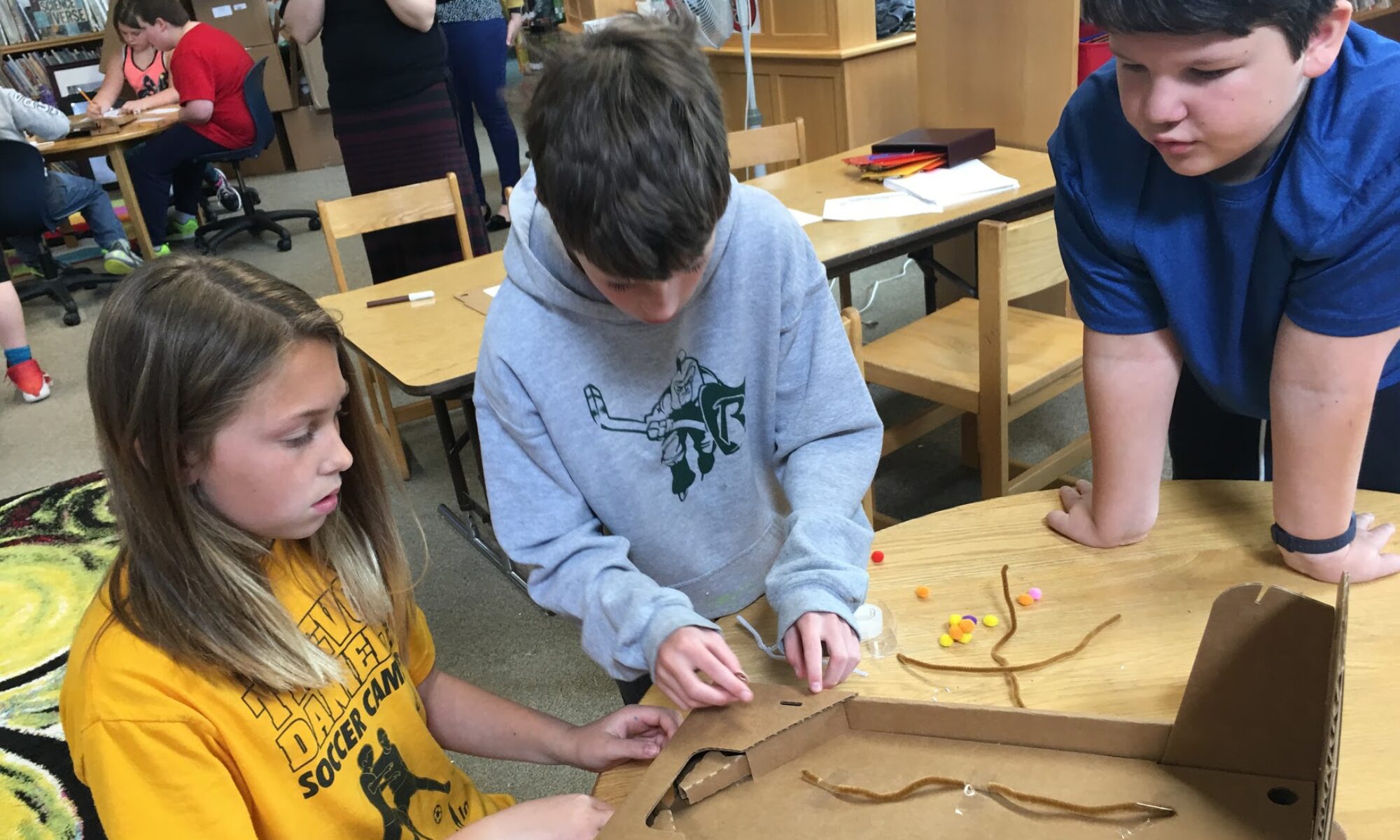

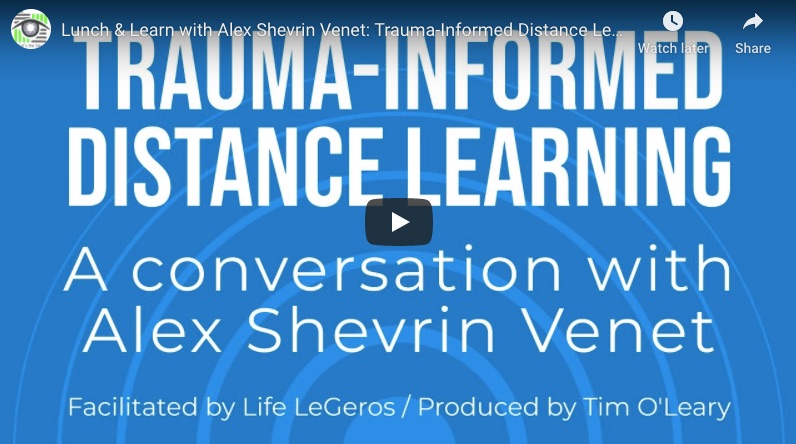
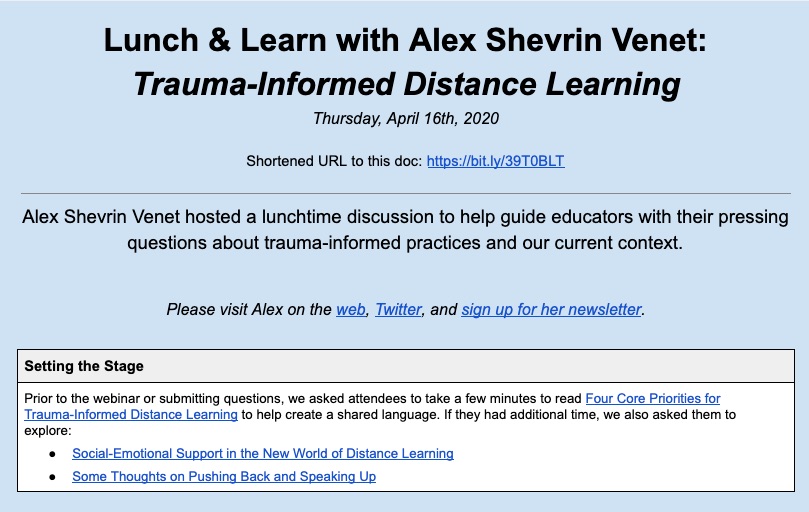
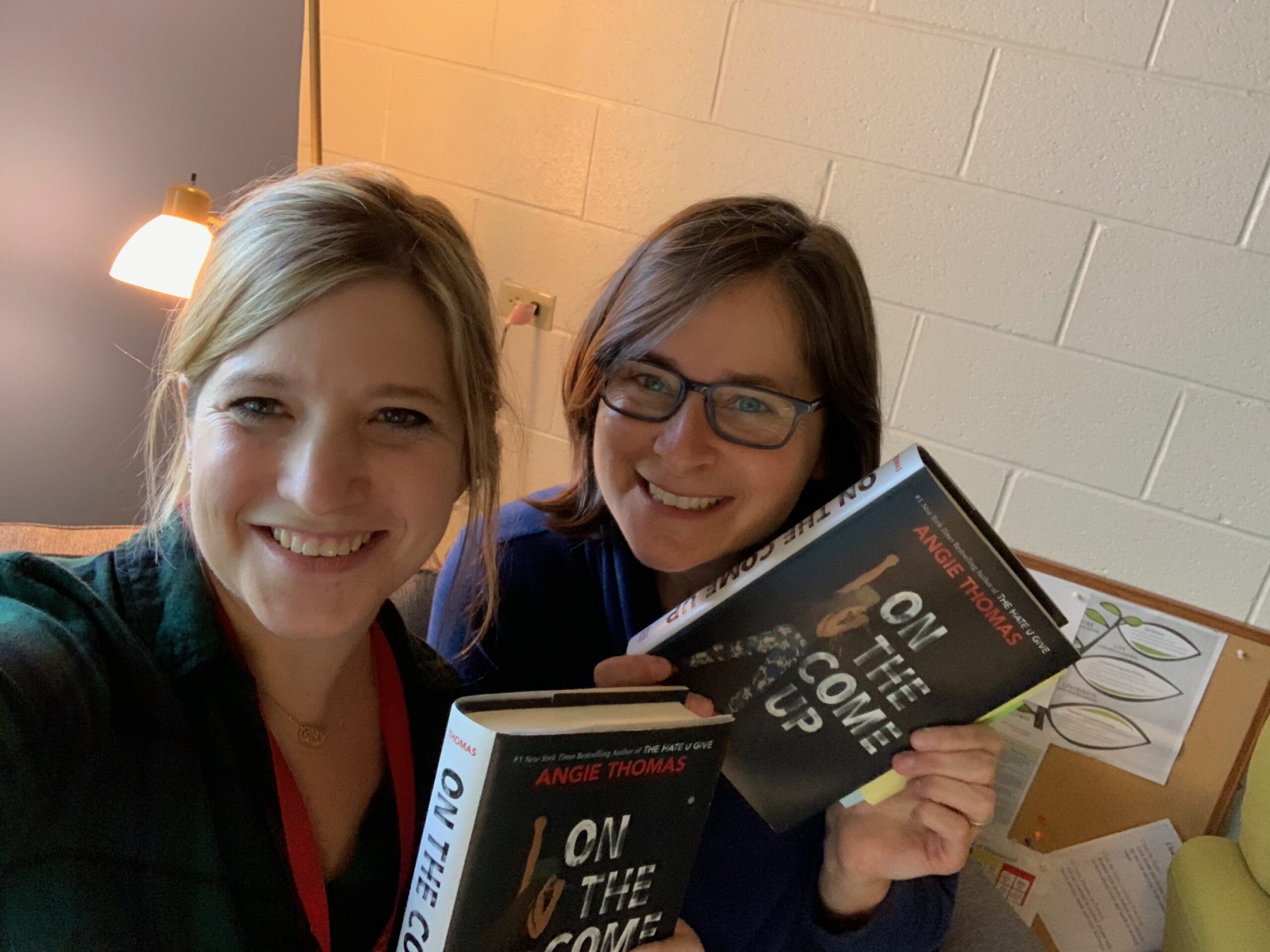

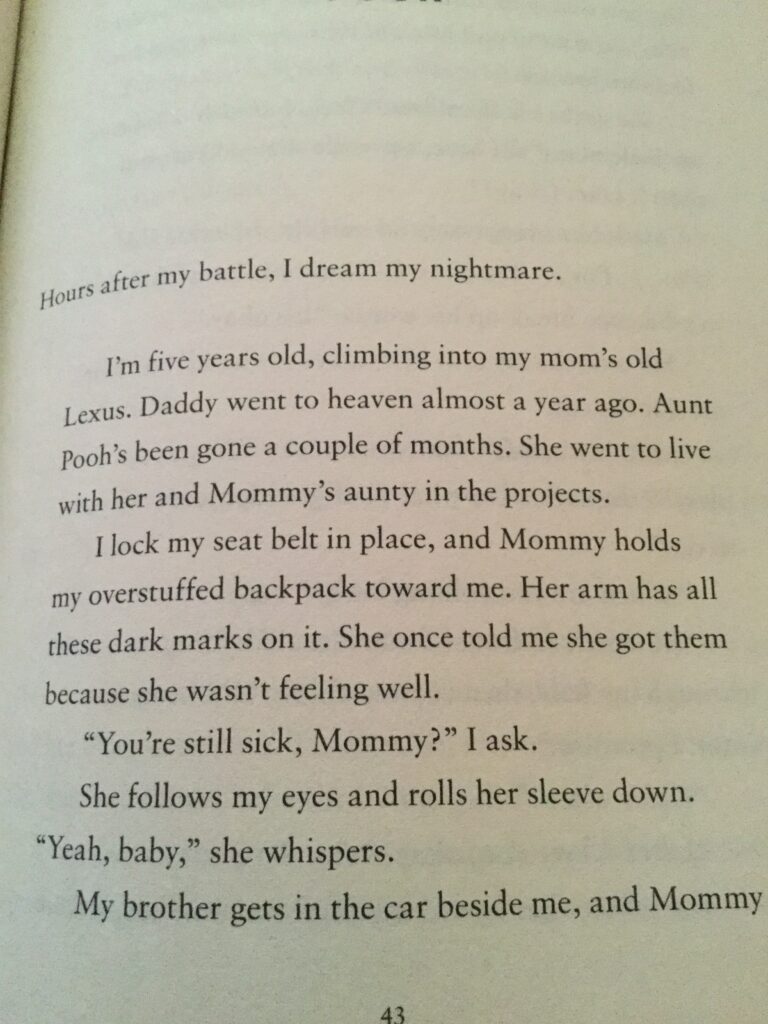
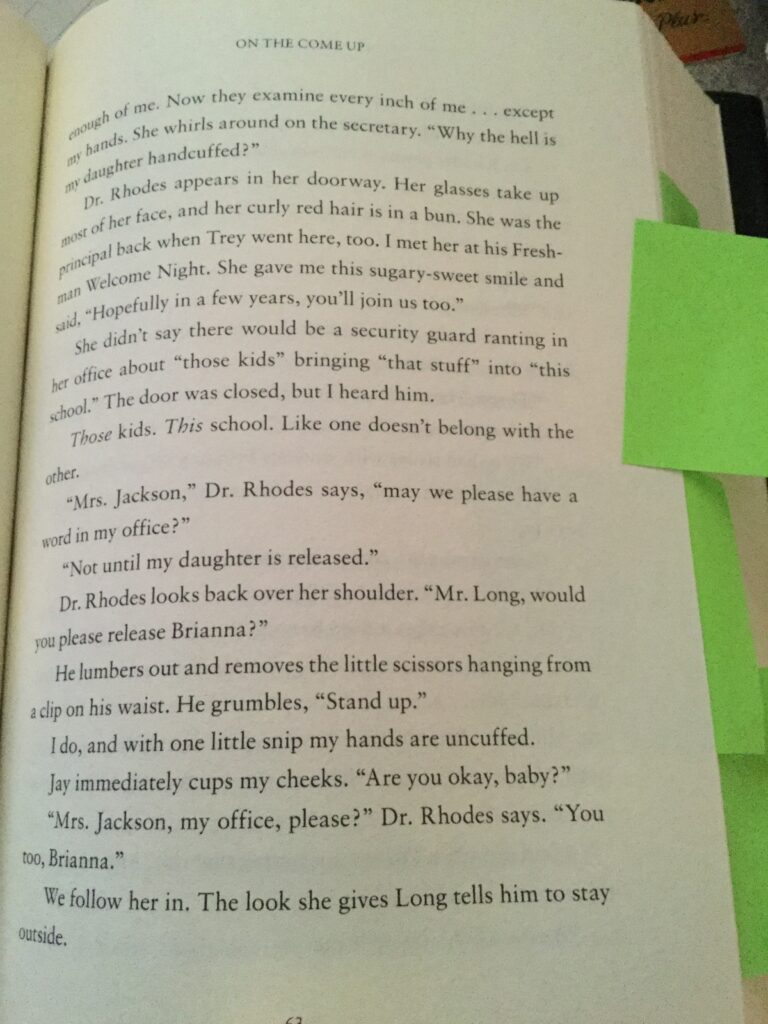
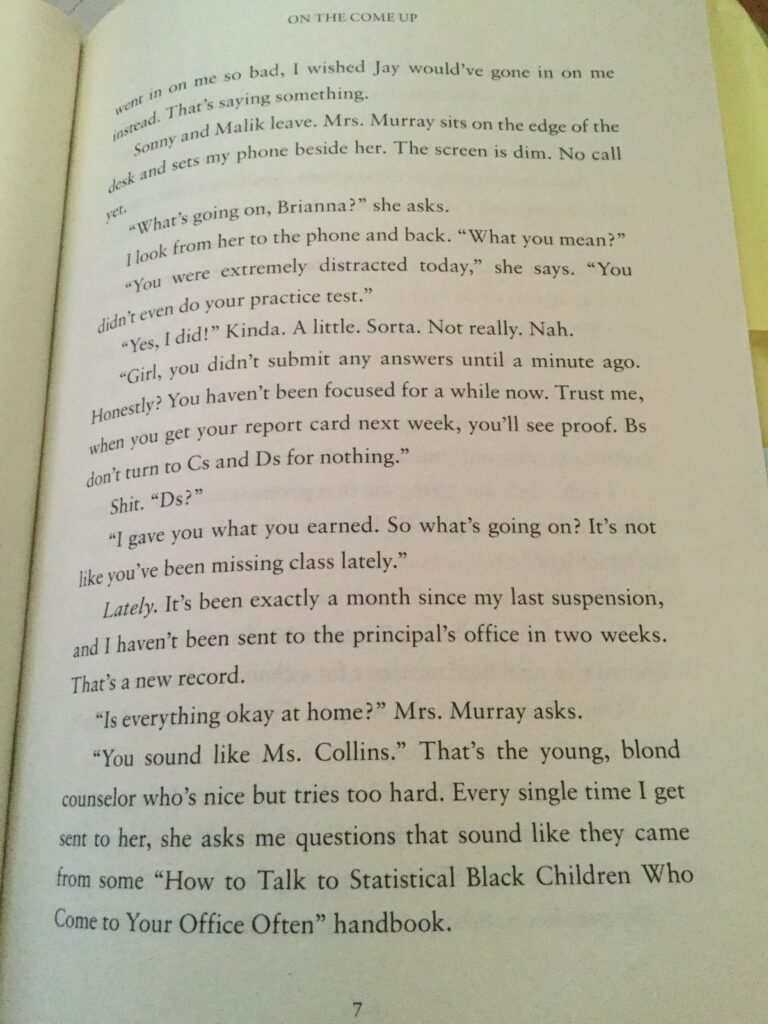
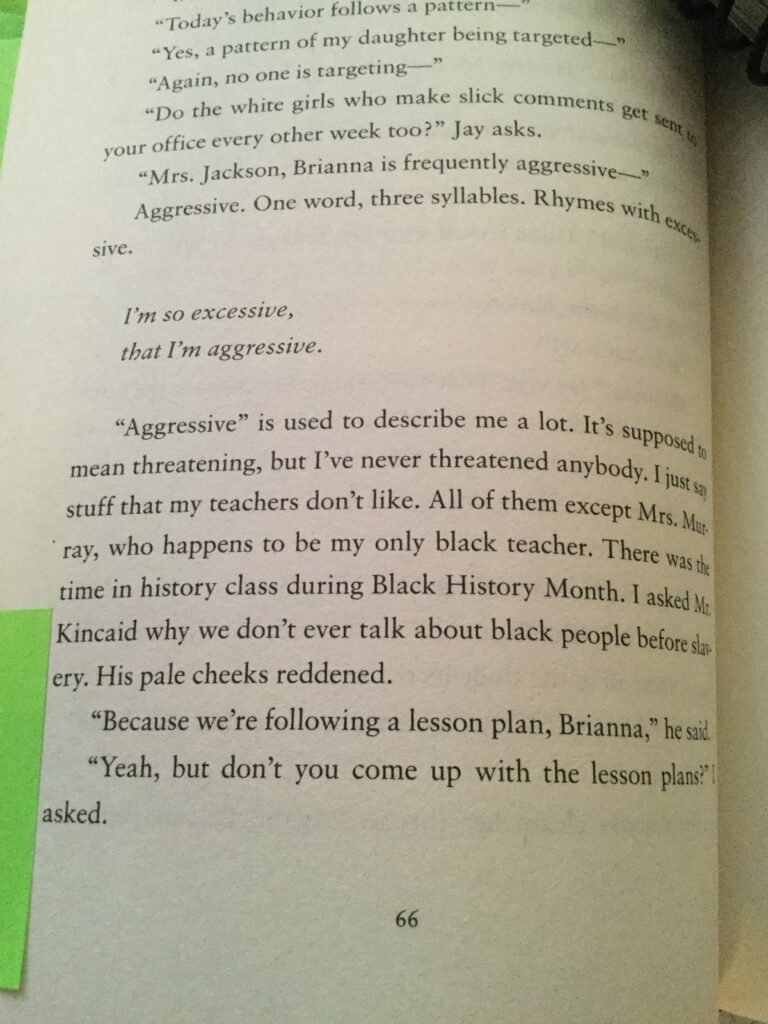

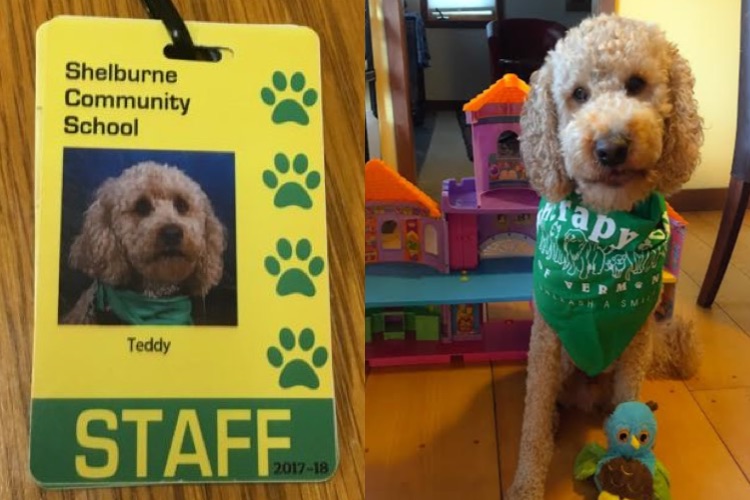
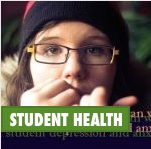 For some students, being ready to learn when they arrive at school is a big ask, and more than a few carry trauma or mental health burdens through their day. And that’s why more and more, schools in Vermont are adding therapy dogs to their staffing rosters.
For some students, being ready to learn when they arrive at school is a big ask, and more than a few carry trauma or mental health burdens through their day. And that’s why more and more, schools in Vermont are adding therapy dogs to their staffing rosters.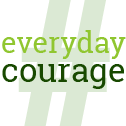 I spent many years working in a therapeutic school with teens who were struggling with anxiety, depression, mental health, and the impacts of trauma. If you let the pace of the year carry you forward, it was easy to lose sight of the progress we were making.
I spent many years working in a therapeutic school with teens who were struggling with anxiety, depression, mental health, and the impacts of trauma. If you let the pace of the year carry you forward, it was easy to lose sight of the progress we were making. 